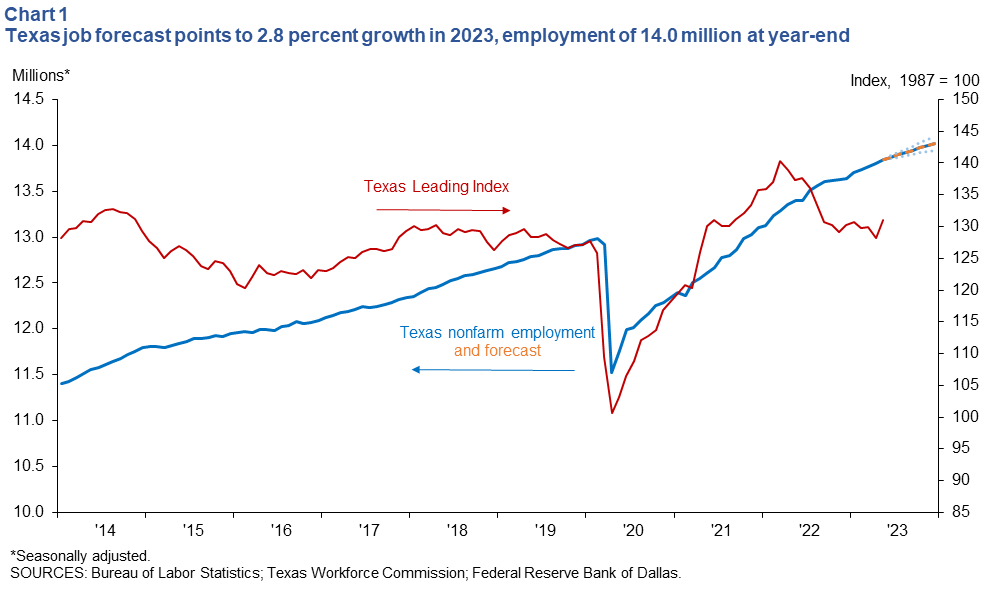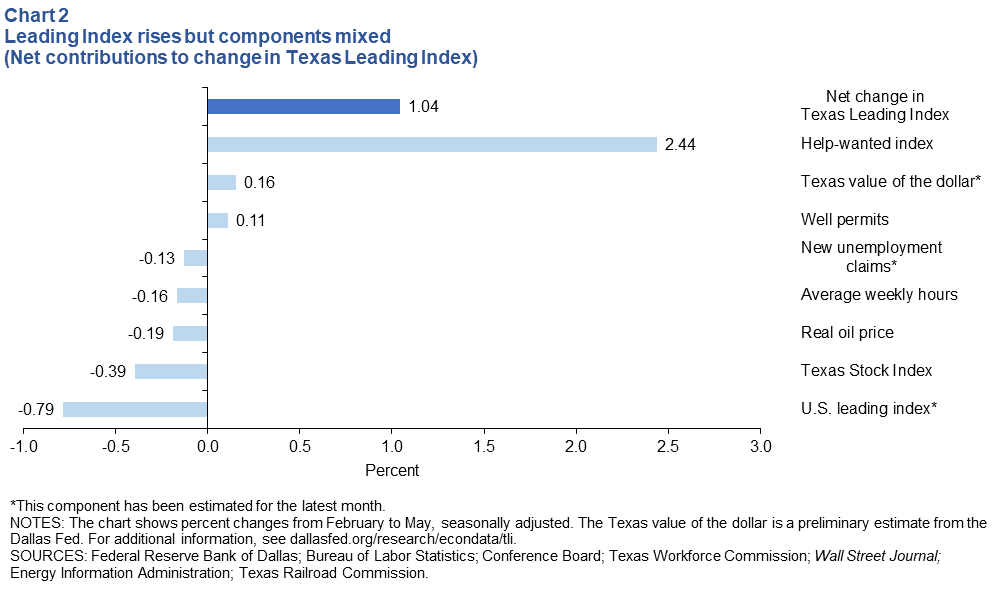Texas Employment Forecast

The Texas Employment Forecast indicates that jobs will increase 2.8 percent in 2023, with an 80 percent confidence band of 2.2 to 3.3 percent. The forecast is based on an average of four models that include projected national GDP, oil futures prices and the Texas and U.S. leading indexes. The forecast suggests that 376,800 jobs will be added in the state this year, and employment in December 2023 will be 14.0 million (Chart 1). It implies growth for the rest of the year will be an annualized 2.2 percent.
Texas employment grew a robust 3.6 percent month over month in May, while April growth was revised down slightly to 2.5 percent.
“Despite economic headwinds, strong employment growth continued in May as the state added close to 41,200 jobs. Texas job growth is a solid 3.6 percent year to date as the labor market continues to defy expectations of slowing,” said Luis Torres, Dallas Fed senior business economist. “Strength in May was led by a surge in energy sector employment and by increases in professional and business services and health care services jobs. Leisure and hospitality and manufacturing were the only two sectors to report job losses.”
The Texas Leading Index increased over the three months through May (Chart 2). Changes in the index components were mixed; increases in the help-wanted index, declines in the Texas value of the dollar, and increases in well permits were positive contributors. In contrast, decreases in the U.S. leading index, Texas stock index, the real price of West Texas Intermediate oil and average hours worked, and increases in new claims for unemployment dragged on the index.


Next release: July 21, 2023
Methodology
The Dallas Fed’s Texas employment forecast projects job growth for the calendar year and is estimated as the 12-month change in payroll employment from December to December.
The forecast is based on the average of four models. Three models are vector autoregressions where Texas payroll employment is regressed on the lags of West Texas Intermediate (WTI) oil prices, the U.S. leading index and the Texas Leading Index, respectively. The fourth model is an autoregressive distributed lag model with regression of payroll employment on lags of payroll employment, current and lagged values of U.S. GDP growth and WTI oil prices, and Texas COVID-19 hospitalizations through March 2023. Forecasts of Texas payroll employment from this model also use as inputs forecasts of U.S. GDP growth from the Federal Reserve Bank of Dallas and WTI oil price futures. All models include four COVID-19 dummy variables (March–June 2020).
For additional details, see dallasfed.org/research/forecast/.
Contact Information
For more information about the Texas Employment Forecast, contact Luis Torres at luis.torres@dal.frb.org.